If you’re a foodie in Singapore, you’re in for a treat. Singapore is home to a diverse range of cuisines, including Sri Lankan food. Sri Lankan cuisine is a mix of Indian, Portuguese, Dutch, and British influences, making it a unique culinary experience.
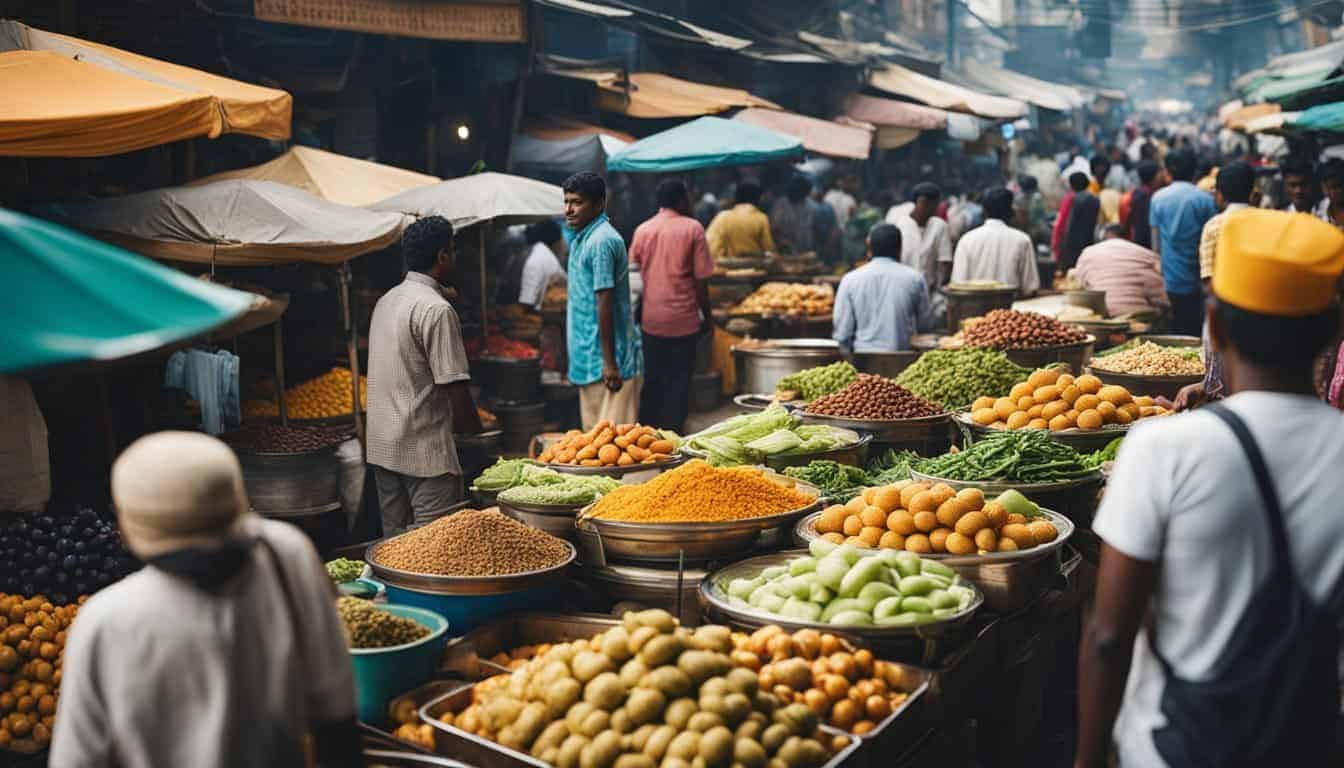
Exploring Sri Lankan Cuisine in Singapore will take you on a journey through the flavors and aromas of this cuisine. You’ll discover the role of spices in Sri Lankan cooking, the signature dishes you must try, and the street food and hawker culture that is an integral part of Sri Lankan food. Whether you’re a meat lover or a vegetarian, there are plenty of options to choose from. The culinary influence of Sri Lanka on Singaporean food is also worth exploring.
Key Takeaways
- Sri Lankan cuisine is a unique blend of Indian, Portuguese, Dutch, and British influences.
- The role of spices is integral to Sri Lankan cooking, and there are plenty of signature dishes to try.
- Vegetarians and meat lovers alike will find plenty of options to choose from in Sri Lankan cuisine.
Exploring Sri Lankan Cuisine in Singapore
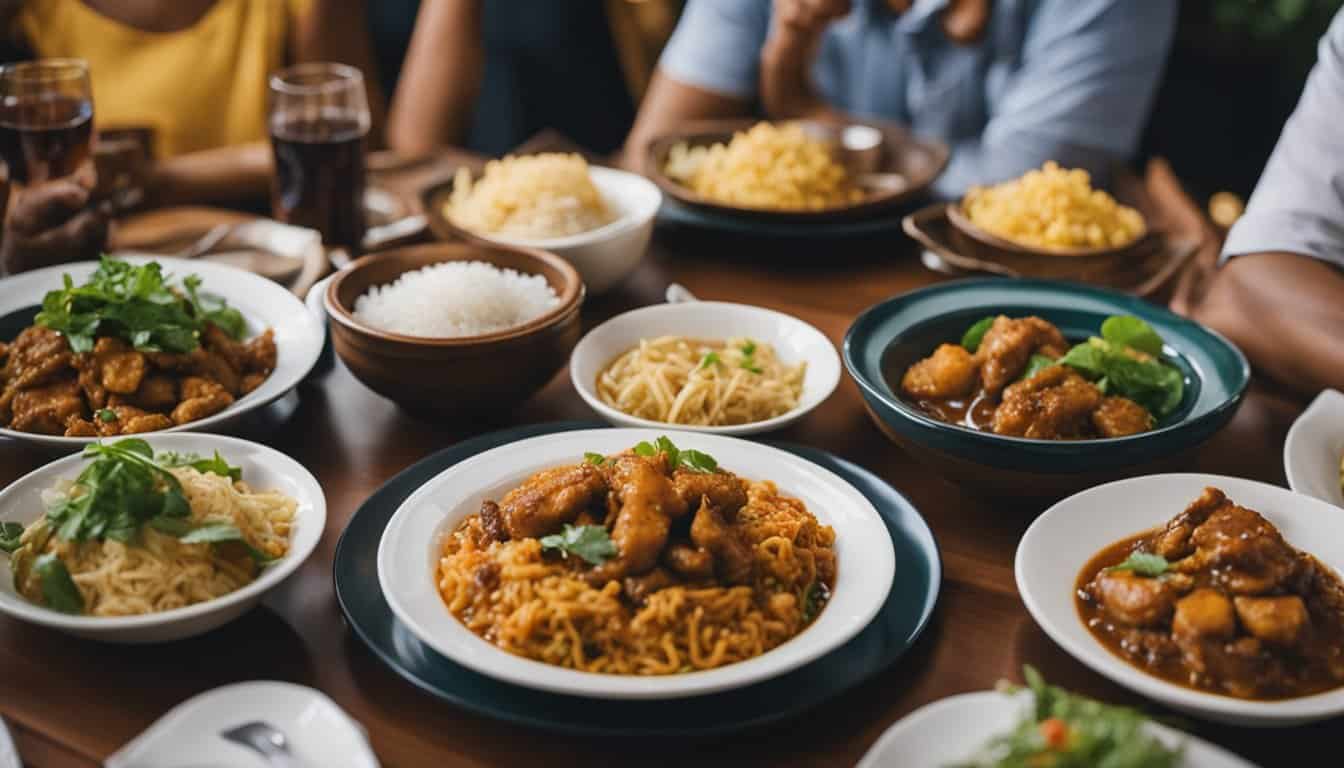
If you’re looking for an exciting culinary adventure, look no further than Sri Lankan cuisine in Singapore. With its bold flavors, aromatic spices, and unique ingredients, Sri Lankan food is a must-try for any food lover.
One of the most popular dishes in Sri Lankan cuisine is curry. From vegetable curries to meat curries, there are endless variations to try. Each curry is made with a unique blend of spices, such as cardamom, cinnamon, and cumin, that give it its distinct flavor. The curries are often served with rice and a variety of sambols, which are spicy condiments made with coconut, chili, and other herbs.
Another must-try dish is watalappam tart, a Sri Lankan dessert made with coconut milk, jaggery, and spices. It has a creamy texture and a sweet, spicy flavor that is sure to satisfy your sweet tooth.
If you’re looking for a traditional Sri Lankan dining experience in Singapore, there are a few restaurants that specialize in Sri Lankan cuisine. Kotuwa is one such restaurant that brings the sights, sounds, and tastes of Sri Lanka to Singapore. The menu features a wide variety of traditional Sri Lankan dishes, including curries, sambols, and desserts.
Hoppers is another popular Sri Lankan restaurant in London that has recently opened a branch in Singapore. The restaurant specializes in Sri Lankan street food, such as hoppers (a type of pancake made with fermented rice flour and coconut milk) and kottu roti (a dish made with shredded roti, vegetables, and meat or seafood).
Overall, Sri Lankan cuisine in Singapore is a must-try for any food lover looking for an exciting culinary adventure. With its bold flavors, aromatic spices, and unique ingredients, it’s a cuisine that is sure to leave you satisfied and wanting more.
The Influence of History on Sri Lankan Food
Sri Lankan food is a rich and diverse cuisine that has been influenced by many cultures throughout history. From the Portuguese, Dutch, and British settlers to the island’s own heritage, the food of Sri Lanka has evolved into a unique fusion of flavors and techniques. In this section, we will explore the impact of history on Sri Lankan food.
Portuguese, Dutch, and British Impact
The Portuguese arrived in Sri Lanka in the early 16th century, followed by the Dutch and British in the 17th and 18th centuries, respectively. These European powers left a lasting impact on the island’s cuisine, introducing new ingredients and cooking techniques. The Portuguese, for example, brought with them chili peppers and tomatoes, which are now staples in Sri Lankan cuisine. The Dutch introduced cinnamon, which is still a major export of the country. The British, on the other hand, brought tea and other crops that are still grown in Sri Lanka today.
Sri Lankan Heritage and Culinary Evolution
Despite the influence of foreign powers, Sri Lankan food has retained its own unique identity. The island’s own heritage, influenced by the Sinhalese and Ceylonese cultures, has played a significant role in shaping the cuisine. Tamarind, for example, is a key ingredient in many Sri Lankan dishes, and is believed to have been used in the country for thousands of years. The use of spices, such as cinnamon, cardamom, and cloves, is also an important part of Sri Lankan cooking.
Over time, Sri Lankan cuisine has evolved to incorporate elements from different cultures. For example, the popular dish of lamprais is believed to have been influenced by the Dutch. It consists of rice, meat, and vegetables wrapped in a banana leaf and baked. Another dish, known as kottu roti, is a stir-fried dish that was likely inspired by Chinese cuisine.
In conclusion, Sri Lankan food is a fusion of different cultures and traditions. The island’s own heritage, combined with the influence of foreign powers, has resulted in a cuisine that is both unique and delicious. Whether you’re enjoying a spicy curry or a sweet dessert, you can taste the history and evolution of Sri Lankan food in every bite.
Signature Sri Lankan Dishes You Must Try
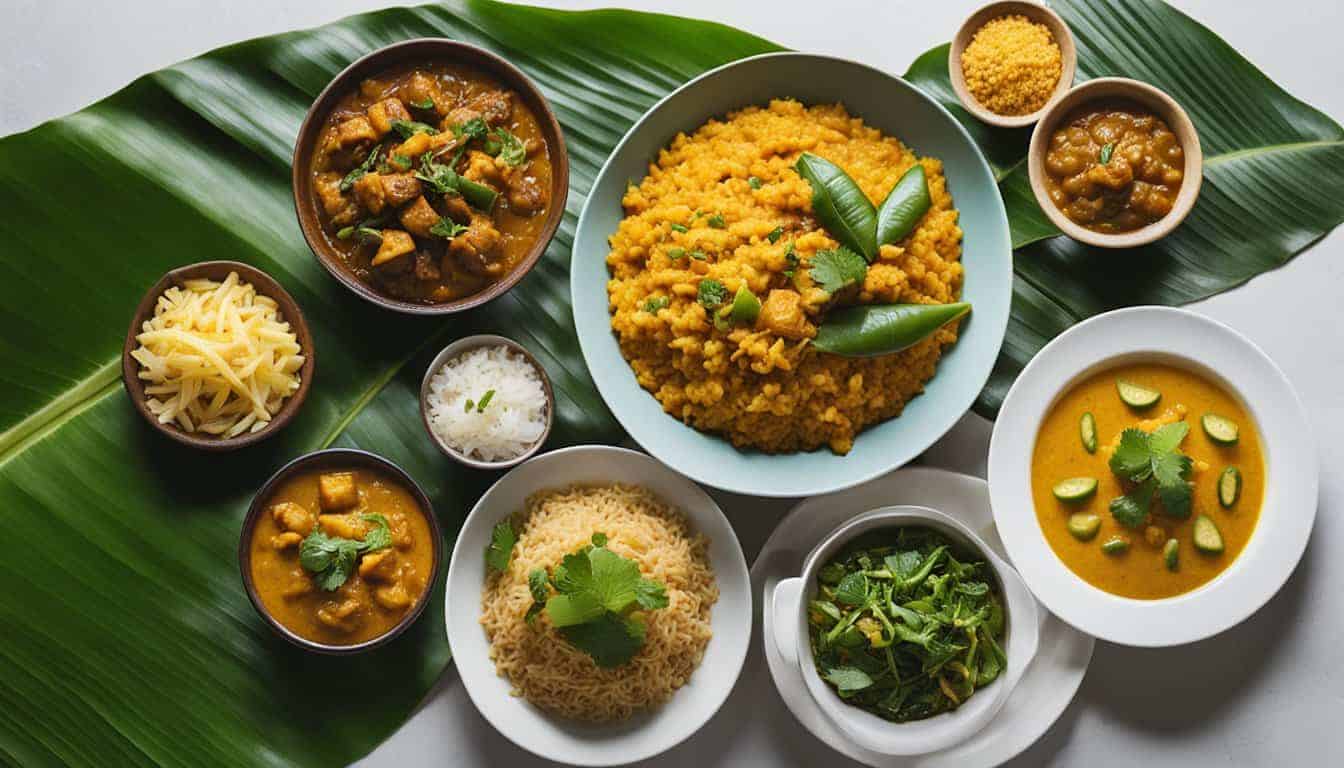
If you are looking for a unique culinary experience, Sri Lankan food is a must-try. With its blend of spices, herbs, and fresh ingredients, Sri Lankan cuisine is a feast for the senses. Here are some of the signature Sri Lankan dishes that you must try in Singapore.
Savory Delights: From Hoppers to Kottu
Sri Lankan cuisine is famous for its savory dishes, and hoppers are a must-try. These crispy, bowl-shaped pancakes are made from fermented rice flour and coconut milk, and are usually served with a spicy sambol or curry. You can find hoppers in many Sri Lankan restaurants in Singapore, including Kotuwa which offers a variety of hoppers, including egg hoppers and milk hoppers.
Another Sri Lankan dish that you must try is kottu. This popular street food is made from shredded roti bread, mixed with vegetables, egg, and meat or seafood, and seasoned with a blend of spices. The result is a delicious and filling dish that is perfect for a quick lunch or dinner. You can find kottu in many Sri Lankan restaurants in Singapore, including Kotuwa which offers a variety of kottu dishes, including chicken kottu and seafood kottu.
Sweet Temptations: Desserts and Preserves
Sri Lankan cuisine is also famous for its sweet treats, and there are many delicious desserts and preserves that you must try. One of the most popular Sri Lankan desserts is wattalappam, a creamy pudding made from coconut milk, jaggery, and spices such as cardamom and nutmeg. This dessert is usually served chilled and is a perfect way to end a spicy meal.
Another Sri Lankan sweet treat that you must try is coconut treacle. This sweet syrup is made from the sap of the coconut flower, which is boiled down until it becomes thick and syrupy. Coconut treacle is delicious drizzled over pancakes, ice cream, or fresh fruit, and is also used as a sweetener in many Sri Lankan desserts.
In conclusion, Sri Lankan cuisine is a must-try for anyone looking for a unique culinary experience. With its blend of savory and sweet flavors, Sri Lankan food is sure to delight your taste buds. So, head over to a Sri Lankan restaurant in Singapore, and indulge in some of the signature dishes such as hoppers, kottu, wattalappam, and coconut treacle.
Sri Lankan Food and Drink Pairings
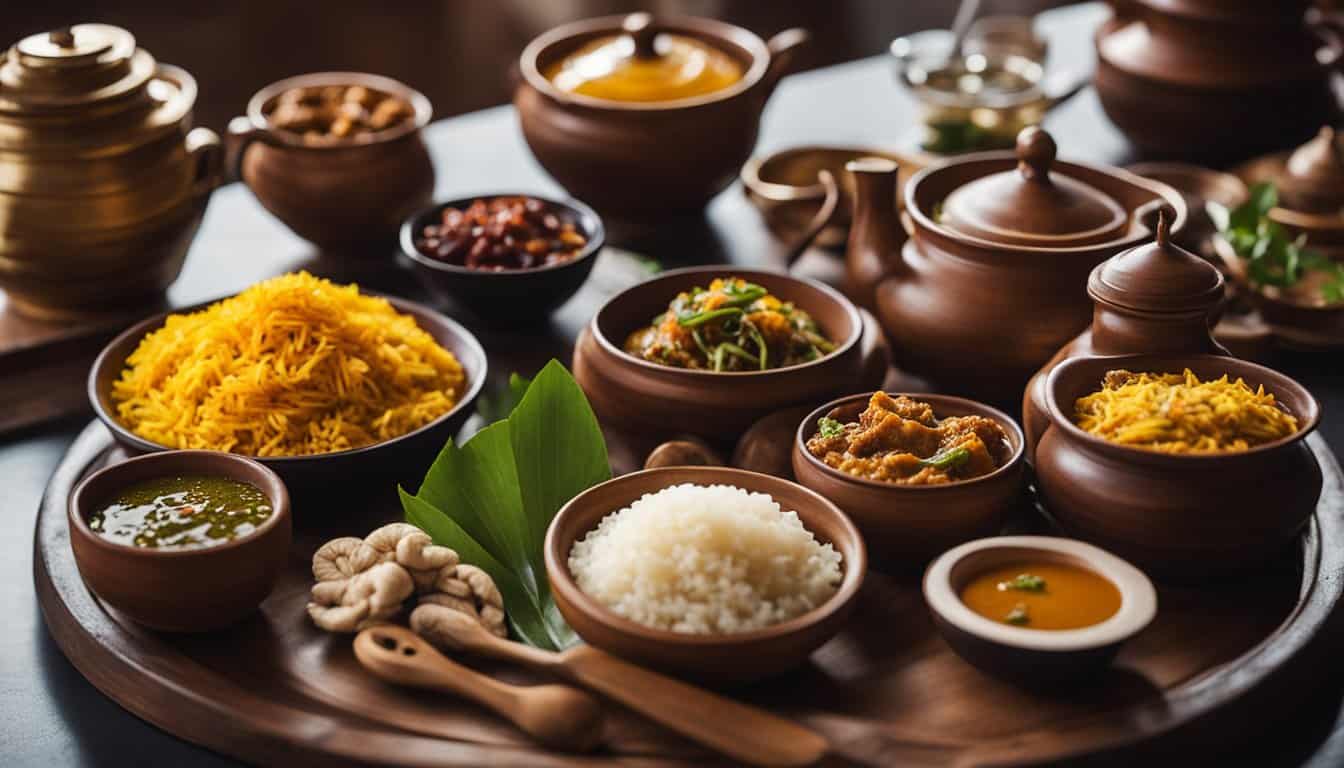
If you’re looking to enhance your Sri Lankan food experience in Singapore, you must try pairing your meal with traditional Sri Lankan beverages or modern cocktails and wine.
Traditional Beverages
Sri Lanka is famous for its traditional beverages, which are perfect to pair with its flavorful cuisine. One of the most popular beverages is Ceylon tea, which is known for its unique flavors and aroma. You can enjoy a cup of hot Ceylon tea with your meal or try it iced for a refreshing drink. Another popular beverage is king coconut water, which is a great thirst quencher and has natural electrolytes. You can also try woodapple juice, which is a tangy and sweet drink made from the fruit of the woodapple tree.
Modern Cocktails and Wine
If you’re looking for a modern twist to your Sri Lankan food experience, try pairing your meal with cocktails or wine. Many restaurants in Singapore offer creative cocktails that incorporate Sri Lankan flavors and ingredients. For example, you can try a coconut mojito, which is a refreshing cocktail made with fresh coconut water and mint. Another great option is the arrack sour, which is a cocktail made with Sri Lanka’s famous arrack liquor, lime juice, and sugar.
If you prefer wine, you can pair your meal with a bottle of red or white wine. Many Sri Lankan dishes pair well with red wine, such as a spicy beef curry, while others pair well with white wine, such as a seafood curry.
Overall, pairing your Sri Lankan meal with a traditional beverage or modern cocktail or wine can enhance your dining experience and add a new dimension of flavor to your meal.
Notable Sri Lankan Restaurants in Singapore
If you’re looking for an authentic Sri Lankan culinary experience in Singapore, you’ll be pleased to know that there are a few notable Sri Lankan restaurants to choose from. Here are two of the best:
Kotuwa and Chef Rishi Naleendra’s Journey
Located at Wanderlust Hotel on Dickson Road, Kotuwa is a Sri Lankan restaurant that pays homage to the country’s vibrant street food culture. The restaurant is the brainchild of Chef Rishi Naleendra, who was born in Sri Lanka and raised in Australia. Chef Rishi’s culinary journey began in Melbourne, where he trained under some of the city’s top chefs. He later moved to Singapore and worked at the renowned Tippling Club before opening Kotuwa.
Kotuwa’s menu features a range of Sri Lankan classics, such as kottu roti, string hoppers, and curries. The standout dish, however, is the crab curry, which is prepared in a variety of ways and served with fluffy white rice. The restaurant’s decor is also worth mentioning, as it features colorful murals and vintage Sri Lankan posters that transport you to the streets of Colombo.
Little India’s Culinary Delights
Little India is one of the most vibrant neighborhoods in Singapore, and it’s also home to some of the city’s best Sri Lankan restaurants. One of the most popular is Rasa Raja Bojun, a hawker stall located in Tekka Centre. The stall has been run by Mr. Odi for over a decade and is the only Sri Lankan hawker stall in Singapore.
Rasa Raja Bojun’s menu is simple but delicious, featuring Sri Lankan staples such as chicken curry, fish cutlets, and vegetable roti. The standout dish, however, is the mutton roll, which is a crispy fried pastry filled with spicy mutton. The stall’s location in Tekka Centre also means that you can enjoy your meal while soaking up the sights and sounds of one of Singapore’s most vibrant markets.
Whether you’re in the mood for a fine dining experience or a casual meal at a hawker stall, Singapore has plenty of options for Sri Lankan food. So why not take a culinary journey to Sri Lanka without leaving Singapore?
The Role of Spices in Sri Lankan Cooking
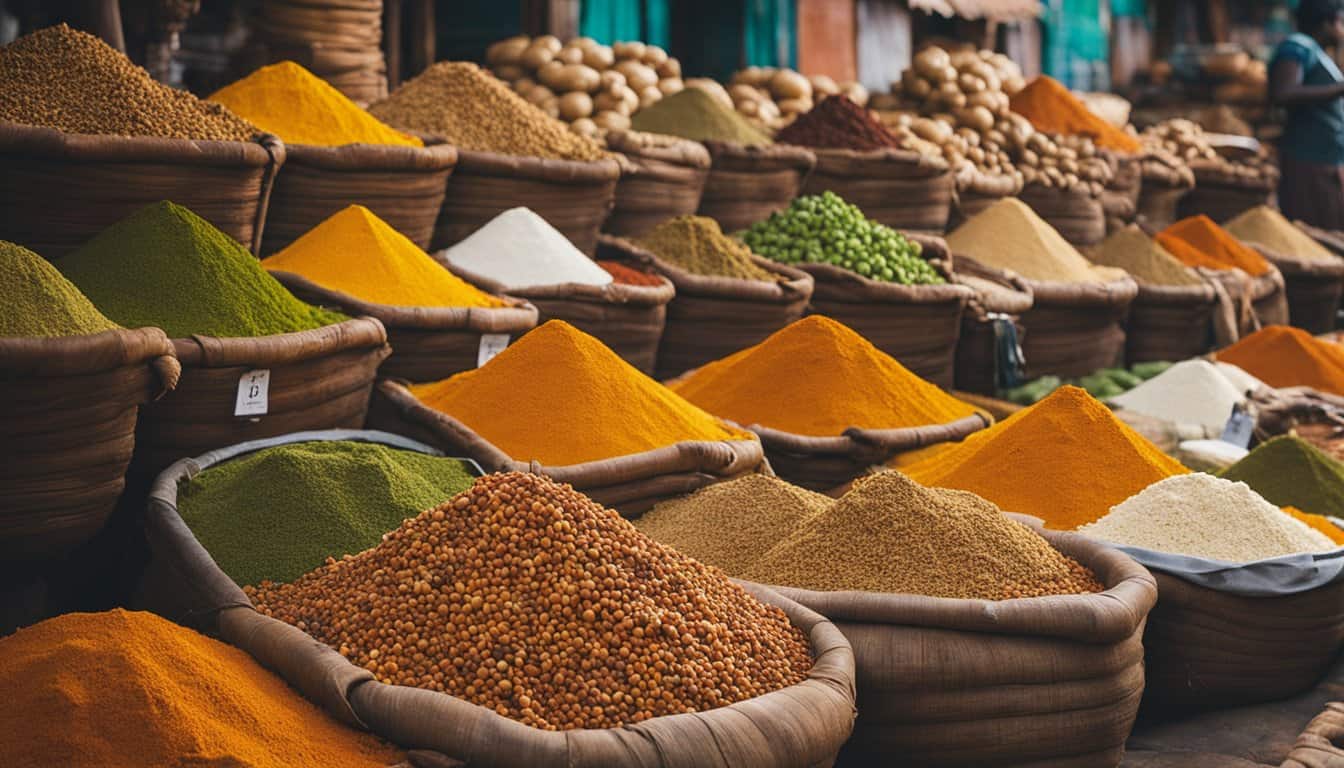
If you’re a fan of spicy food, then you’re in for a treat with Sri Lankan cuisine! Spices are a crucial part of Sri Lankan cooking, and they add a depth of flavor and complexity to dishes that you won’t find anywhere else.
One of the most famous spices used in Sri Lankan cuisine is cinnamon. Sri Lanka is one of the world’s largest exporters of cinnamon, and it’s used in everything from curries to desserts. The sweet, woody flavor of cinnamon adds a warm, comforting taste to dishes, and it’s often paired with other spices like cardamom and cloves.
Curries are a staple of Sri Lankan cuisine, and they’re made with a variety of spices that give them their distinct flavor. Some of the most commonly used spices in Sri Lankan curries include cumin, coriander, turmeric, and chili powder. These spices are often combined with coconut milk to create a creamy, flavorful sauce that’s perfect for soaking up with rice or bread.
In Sri Lankan cuisine, spices are used not just for flavor, but also for their health benefits. For example, turmeric is known for its anti-inflammatory properties, while cinnamon has been shown to help regulate blood sugar levels. By incorporating these spices into their cooking, Sri Lankans are able to create dishes that are not only delicious but also good for you.
Overall, spices play a vital role in Sri Lankan cooking, and they’re what make the cuisine so unique and exciting. Whether you’re a fan of spicy food or just looking to try something new, Sri Lankan cuisine is definitely worth exploring!
Sri Lankan Street Food and Hawker Culture

If you’re looking for a taste of Sri Lankan food in Singapore, the hawker centers are the perfect place to start. Hawker centers are a staple of Singaporean culture and offer a wide variety of delicious and affordable food options. Sri Lankan cuisine has a strong presence in these hawker centers, where you can find flavorful dishes that will tantalize your taste buds.
Short Eats and Quick Bites
One of the most popular types of Sri Lankan street food is short eats. These are small, savory snacks that are perfect for a quick bite on the go. Some popular short eats include fish cutlets, vegetable roti, and mutton rolls. These snacks are typically made with a crispy outer layer and a flavorful filling, such as dhal or minced meat. You can find these tasty treats at many hawker centers in Singapore.
Hawker Centers: A Melting Pot of Flavors
Hawker centers are a great place to experience the diverse food culture of Singapore. In addition to Sri Lankan food, you can find a wide variety of other cuisines, including Indian cuisine. Many hawker stalls offer a fusion of different flavors, combining traditional dishes with modern twists.
When you visit a hawker center, be sure to try some of the Sri Lankan dishes. Some popular options include chicken curry, fish curry, and string hoppers. These dishes are typically served with rice and a variety of flavorful sauces and chutneys.
Overall, the hawker centers in Singapore offer a unique and exciting culinary experience. With so many different types of food available, you’re sure to find something that you love. So, grab a plate, pull up a chair, and enjoy the delicious flavors of Sri Lankan street food in Singapore.
Vegetarian and Plant-Based Options in Sri Lankan Cuisine

If you’re a vegetarian or vegan, you’ll be pleased to know that Sri Lankan cuisine has plenty of options for you to choose from. Many Sri Lankan dishes are naturally plant-based, making it easy to enjoy a delicious meal without any meat or dairy.
One popular vegetarian dish is fermented rice, also known as hoppers. These pancakes are made from a batter of rice flour and coconut milk, and are typically served with a spicy coconut sambal. They’re a staple food in Sri Lanka and can be enjoyed for breakfast, lunch, or dinner.
Another must-try dish is milk rice, also known as kiribath. This creamy rice dish is made by cooking rice with coconut milk and is often served with a spicy onion and chili sambal. It’s a popular dish for special occasions and festivals and is commonly eaten for breakfast.
If you’re looking for a plant-based protein source, lentils are a great option. Sri Lankan cuisine features many lentil-based dishes, such as dhal curry. This hearty curry is made from lentils, spices, and coconut milk, and is often served with rice or roti.
For a tasty vegetarian meal, head to Little Green Kitchen. This restaurant specializes in healthy, plant-based cuisine and offers a variety of Sri Lankan-inspired dishes. Their menu includes options like jackfruit curry, beetroot curry, and pumpkin curry, all of which are made with fresh, locally-sourced ingredients.
Overall, Sri Lankan cuisine has plenty of options for vegetarians and plant-based eaters. Whether you’re looking for a hearty lentil curry or a delicious fermented rice pancake, you’re sure to find something to satisfy your taste buds.
Sri Lanka’s Culinary Influence on Singaporean Food
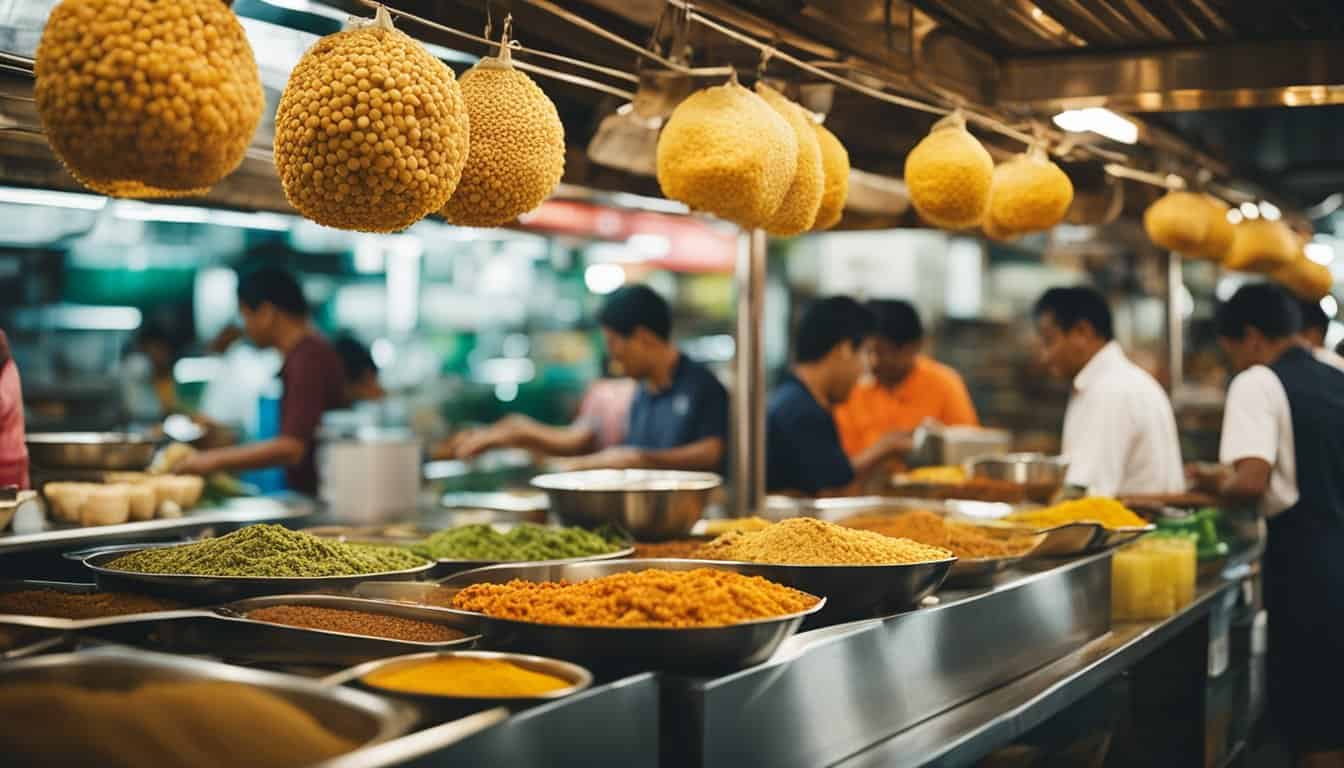
If you are a foodie in Singapore, you may have noticed the increasing popularity of Sri Lankan cuisine in recent years. From fine dining restaurants to hawker centers, Sri Lankan dishes are making their way into the hearts and stomachs of locals and tourists alike.
The culinary journey of Sri Lanka goes back centuries, with influences from various cultures and civilizations. Sri Lankan kings were known for their hospitality, and this trait is reflected in their food as well. The use of spices and herbs is a prominent feature of Sri Lankan cuisine, which gives it a unique flavor profile that is both bold and complex.
In Singapore, Sri Lankan cuisine is still a relatively new addition to the food scene. However, it is quickly gaining popularity, thanks to the efforts of chefs and restaurateurs who are introducing the cuisine to locals and tourists. One such example is Kotuwa, a Sri Lankan restaurant in Singapore that is run by Chef Rishi Naleendra. The restaurant offers a range of Sri Lankan dishes, from traditional curries to street food favorites.
Sri Lankan cuisine is also making its way into fine dining establishments in Singapore. At the Michelin-starred restaurant, Cheek Bistro, Chef Rishi Naleendra offers a Sri Lankan-inspired dessert that features coconut sorbet, jackfruit, and jaggery.
Overall, Sri Lankan cuisine is an exciting addition to the food scene in Singapore. Its unique flavor profile and rich culinary history make it a must-try for foodies who are looking for something new and exciting.
Frequently Asked Questions

What tantalizing dishes can I expect to find at a Sri Lankan restaurant in Singapore?
Sri Lankan cuisine is rich in flavor and spices, and you can expect to find a variety of mouth-watering dishes at a Sri Lankan restaurant in Singapore. Some of the must-try dishes include hoppers, string hoppers, kottu roti, devilled prawns, and crab curry. These dishes are made with fresh ingredients and spices that are unique to Sri Lankan cuisine, making them a must-try for food lovers.
Who is the culinary mastermind behind Kotuwa, the vibrant Sri Lankan eatery?
Kotuwa is the brainchild of Chef Rishi Naleendra, who is known for his innovative approach to Sri Lankan cuisine. Chef Rishi has won numerous awards for his culinary skills, and his passion for food is evident in every dish he creates. He is committed to using fresh, locally sourced ingredients to create authentic Sri Lankan dishes that are both delicious and healthy.
Can I find a Sri Lankan restaurant that offers halal options in Singapore?
Yes, there are several Sri Lankan restaurants in Singapore that offer halal options. One such restaurant is Kotuwa, which offers a range of halal dishes that are suitable for Muslim diners. Other popular Sri Lankan restaurants that offer halal options include Rasa Raja Bojun and Colombo Restaurant.
What are the health benefits of indulging in Sri Lankan cuisine?
Sri Lankan cuisine is known for its use of fresh ingredients and spices, which are packed with health benefits. Many of the dishes are made with coconut milk, which is rich in vitamins and minerals that are essential for good health. Sri Lankan cuisine also incorporates a variety of vegetables and seafood, which are high in protein and nutrients.
What’s the buzz about Hoppers and where can I try them in Singapore?
Hoppers are a popular Sri Lankan dish that is made with fermented rice flour and coconut milk. They are crispy on the outside and soft on the inside, and are typically served with a variety of curries and sambols. Hoppers are a must-try for anyone visiting a Sri Lankan restaurant in Singapore. You can try them at Kotuwa, which is known for its delicious hoppers.
How can I secure a reservation to experience the flavors of Kotuwa?
Kotuwa is a popular Sri Lankan restaurant in Singapore, and reservations are highly recommended. You can make a reservation by calling the restaurant or by using their online reservation system. It’s best to book in advance to avoid disappointment, especially during peak hours.




